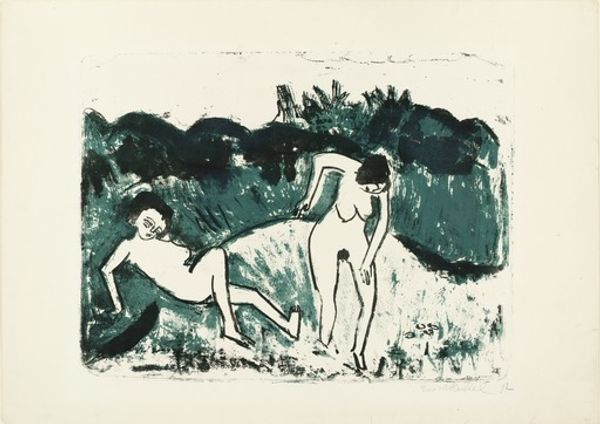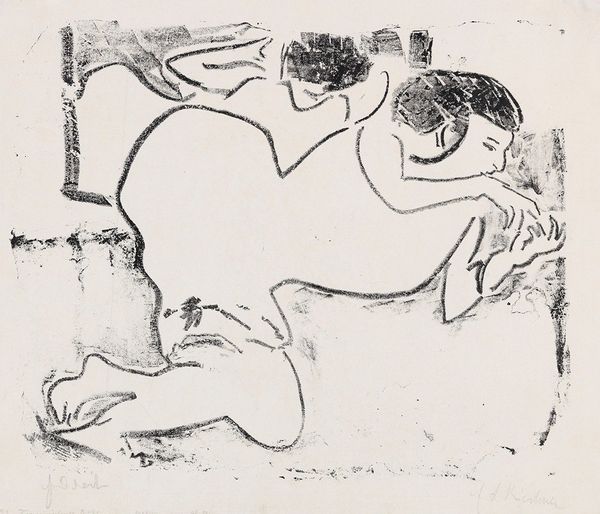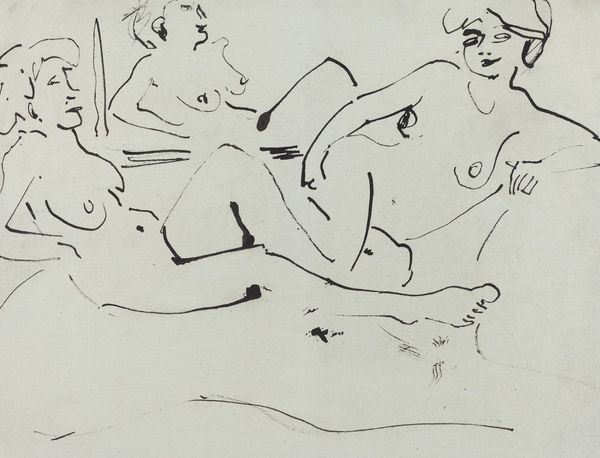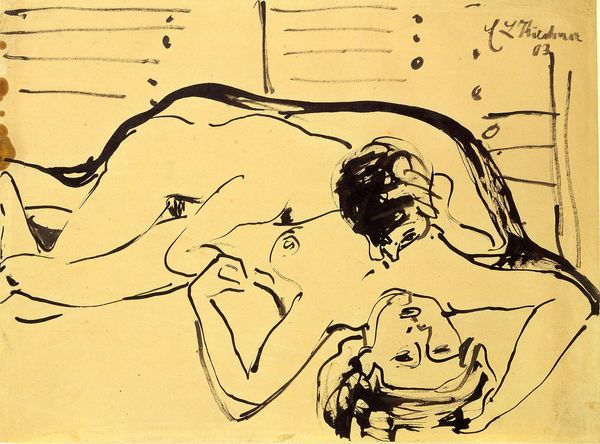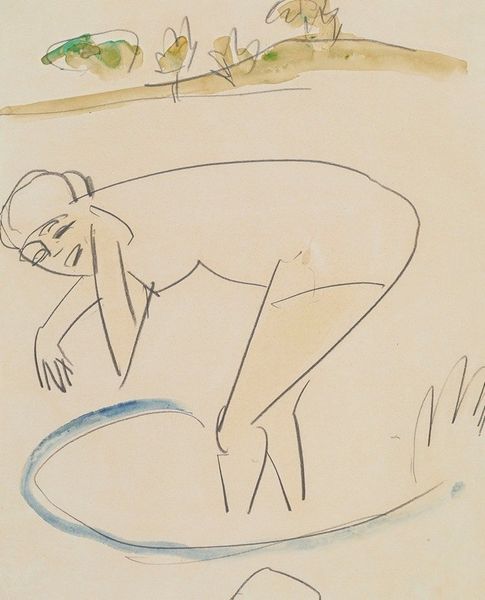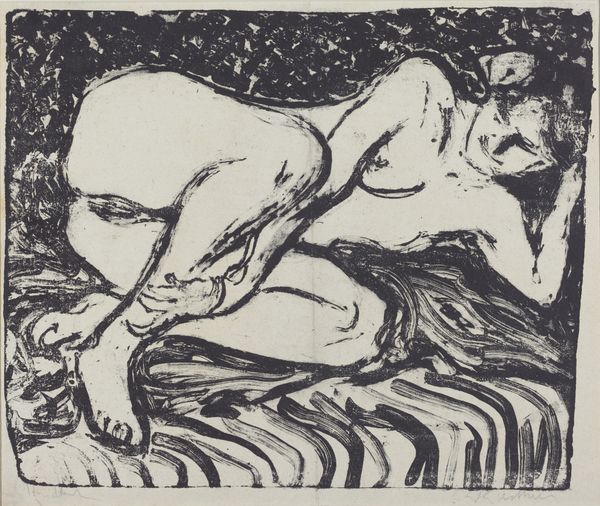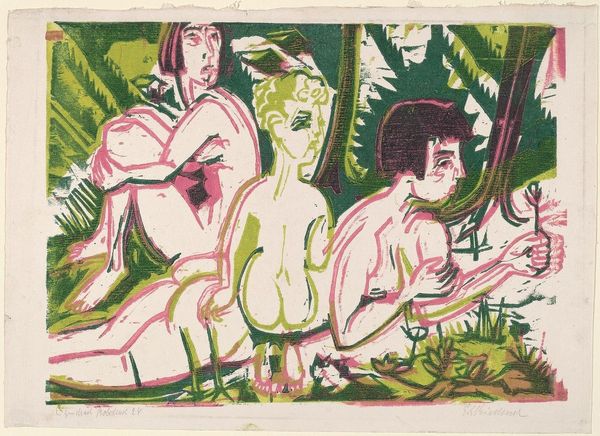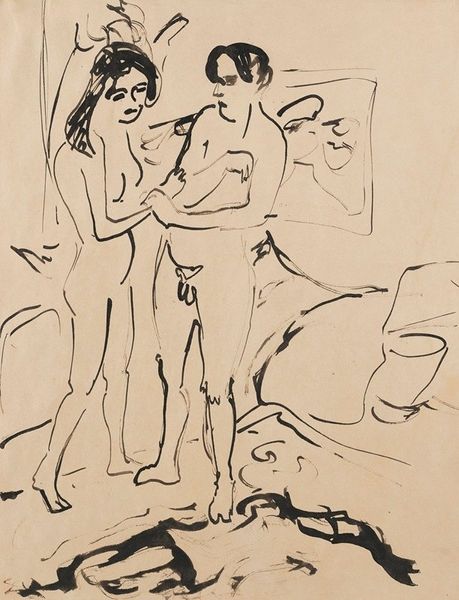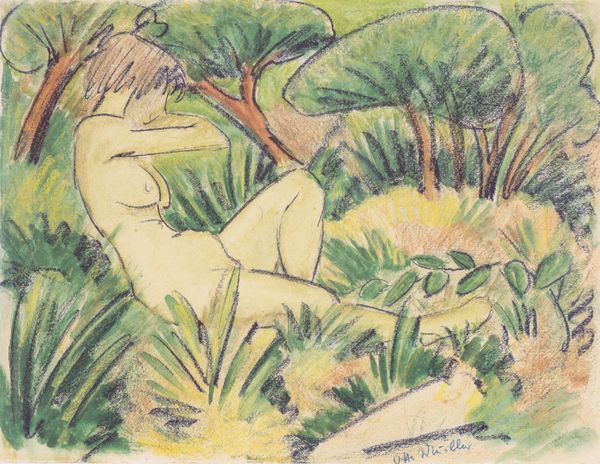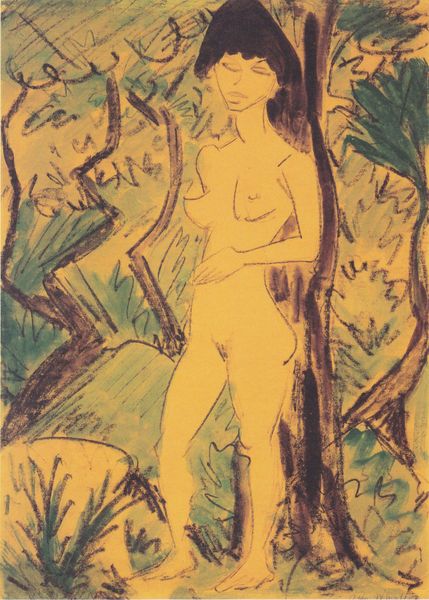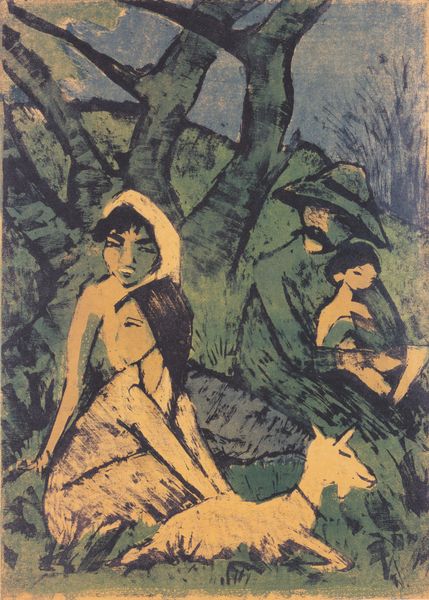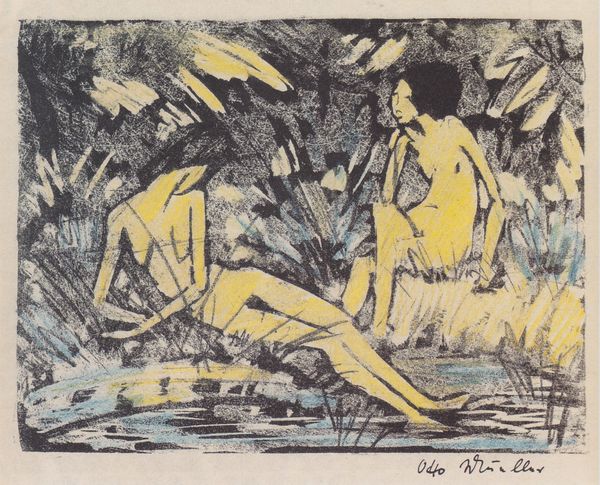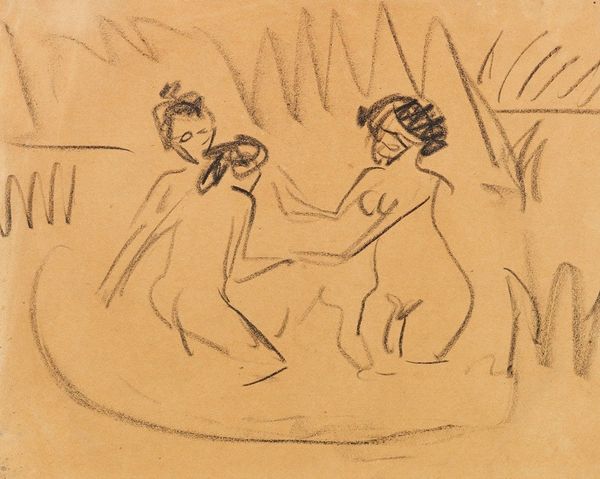
print, ink
#
ink drawing
#
ink painting
# print
#
german-expressionism
#
figuration
#
ink
#
nude
Dimensions: sheet: 36.5 x 48.9 cm (14 3/8 x 19 1/4 in.)
Copyright: National Gallery of Art: CC0 1.0
Curator: This arresting print, simply titled "In the Meadow," was crafted by Erich Heckel around 1912. Executed in ink, it offers a potent example of early Expressionist figuration. What's your first take on this? Editor: My initial response is one of slight unease. There's a raw energy, yes, but also something almost…awkward. The figures, particularly the one reclining, seem disconnected and vulnerable in the somewhat aggressive landscape. Curator: Vulnerability resonates for me, absolutely. Recall that the Die Brücke artists like Heckel were deeply engaged in exploring the "primitive," seeing authenticity in raw, unvarnished emotion. The nudes themselves reject classical ideals. They’re not goddesses, but representations of lived experience, of humanity laid bare –literally and figuratively. Editor: That makes perfect sense given the social context. We're on the eve of the First World War; traditional social structures and beliefs are crumbling. To portray figures stripped of idealization speaks to that profound societal anxiety and the search for something more authentic. There is a very deep green color, that maybe it reminds the woods that became trenches, and hiding. Curator: Exactly. The deliberate crudeness in the lines – the thick, almost harsh application of ink – becomes symbolic. The meadow, traditionally a place of leisure and idyllic beauty, is rendered with an almost brutal honesty, as if to suggest that even in nature there is no escape from the harsh realities of existence. We see the figures trying to escape though the canvas of the war is inevitable. Editor: It’s fascinating how the figures interact – or rather, don't interact. One almost seems to ignore the other. Is that a deliberate comment on alienation or disconnectedness? Perhaps suggesting the isolation an individual might experience despite being physically present alongside others. Curator: Possibly both. Isolation was a growing concern during urbanization, which relates to this image. As an Iconographer, I'm also drawn to the possibility of timeless symbolism in these figures, perhaps an allegory for humanity's relationship with nature – a search for solace that ultimately can’t erase our internal angst. Editor: Well, the art historical reading coupled with your understanding of symbolism offers a powerful context. It makes you reconsider what you think you are looking at here. Curator: I appreciate the fresh socio-political angle and what is interesting to think is that it still impacts current-day issues as the mental health. Editor: Precisely, the painting leaves one contemplating, in the sense that it evokes feelings of internal unrest in this day and age.
Comments
No comments
Be the first to comment and join the conversation on the ultimate creative platform.
